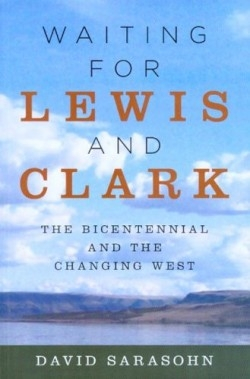Waiting for Lewis and Clark
The Bicentennial and the Changing West
Much of the focus during the 1904—1906 centennial celebration of Meriwether Lewis and William Clark’s 1803—1806 expedition across the western part of the unexplored United States went to their Lemhi Shoshone traveling companion, Sacagawea.
Now it appears that—during its current 200-year commemoration—the “explorers who had carefully catalogued the natural world around them, and who had described tribes instead of decimating them, started to look more appealing to more environmentally-minded and diversity-conscious Americans.”
This is the story behind the bicentennial, which kicked off in the summer of 2003 and will conclude in the summer of 2006. Readers are taken on their own journey as the author details all the players—including the National Park Service, environmental groups, the numerous Indian tribes, the local and national politicians, and the towns and states the expedition traveled through—and their in-fighting and compromises.
He also profiles six individuals essential to the mission, including Gerard Baker, a North Dakota Mandan-Hidatsa who served as the National Park Superintendent of the Lewis and Clark trail, and architect Maya Lin, who’s working on the Confluence Project, seven installations along the Snake and Columbia Rivers.
The author is currently associate editor of The Oregonian in Portland; he’s also written for other newspapers, including the New York Times and the Washington Post. He received his PhD in American History at UCLA. In 2002 he was awarded a fellowship to study the Lewis and Clark Bicentennial.
Sarasohn plants unexpected tidbits throughout the story he tells. For example, the expedition was originally estimated to cost $2,500. The actual final expenditure was closer to $38,000. And in 1930, Nebraska, South Dakota, and North Dakota had a cumulative twelve members in Congress; by 2000 that number had decreased to five representatives.
A declining population is one reason many of the Western states involved in the Bicentennial hope to redefine themselves at this time as destinations of heritage tourism. The Native tribes are also looking to expand those opportunities.
Several times the author mentions Signature Events highlighting different aspects and locations of the commemoration; a timeline or a calendar of these events would have been helpful. He does mention the www.lewisandclark200.org website, which goes into more needed detail.
The book offers a reflective view on this remarkable development in American history and a contemporary take on the expedition’s 200-year anniversary.
“From salmon runs to grizzly bears to a prairie that once covered half a continent and now survives in subdivided slices,” writes Sarasohn, “Lewis and Clark would not recognize their West today—even allowing for the difference in view between a keelboat and a Winnebago.”
Reviewed by
Robin Farrell Edmunds
Disclosure: This article is not an endorsement, but a review. The publisher of this book provided free copies of the book to have their book reviewed by a professional reviewer. No fee was paid by the publisher for this review. Foreword Reviews only recommends books that we love. Foreword Magazine, Inc. is disclosing this in accordance with the Federal Trade Commission’s 16 CFR, Part 255.

